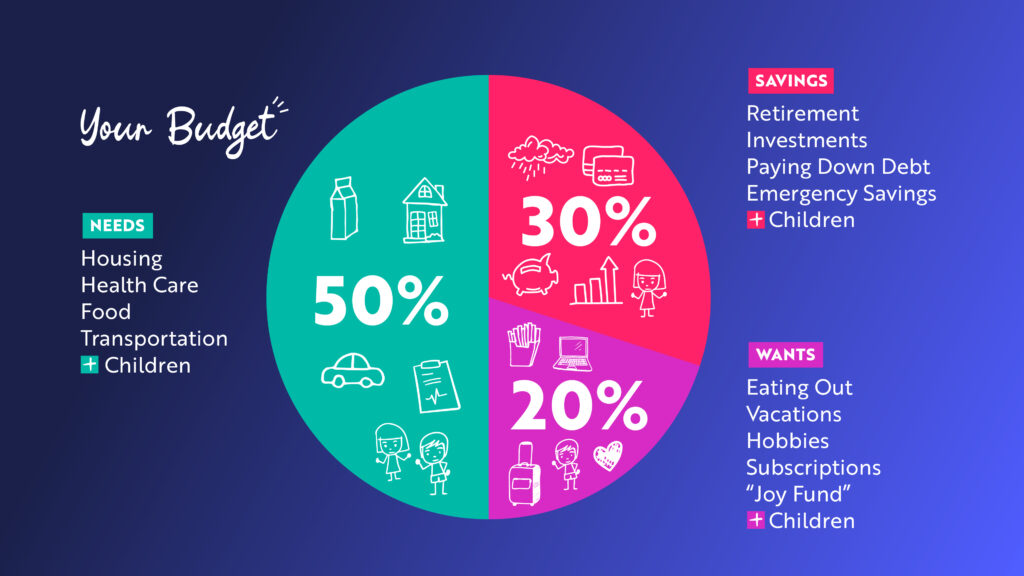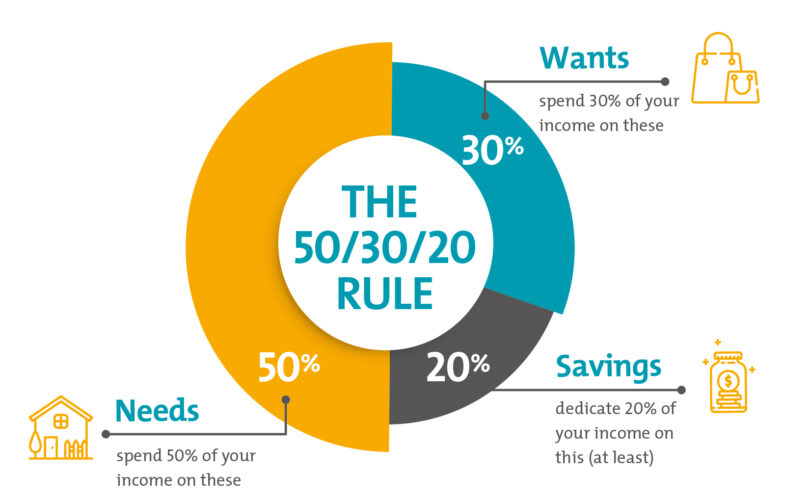
The "50/30/20 rule" for budgeting means allocating 50% of your after-tax income towards "needs" (like housing, food, utilities), 30% towards "wants" (entertainment, dining out), and 20% towards "savings" (retirement funds, emergency fund) every month.
Breakdown:
- 50% Needs: Essential expenses like rent/mortgage, groceries, transportation, health insurance.
- 30% Wants: Discretionary spending like hobbies, dining out, vacations.
- 20% Savings: Contributions to retirement accounts, emergency fund, debt repayment.
Key points about the 50/30/20 rule:
- Simple guideline:This rule provides a basic framework for managing your money, making it easy to understand and implement.
- Flexibility:While the percentages are a starting point, you may need to adjust them based on your individual financial situation and goals.
- Prioritizing savings:By dedicating a significant portion of your income to savings, this rule encourages you to build a financial safety net.






